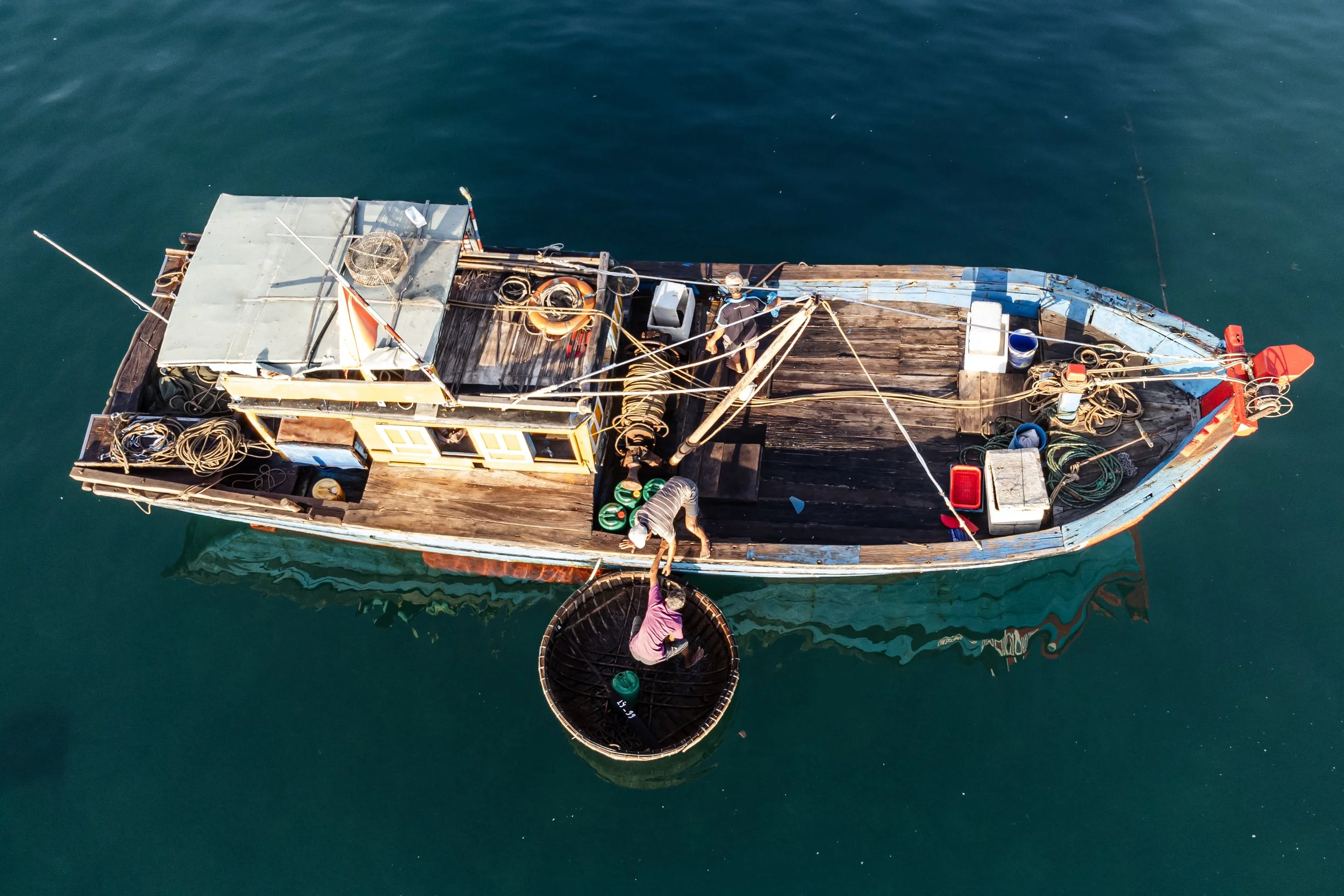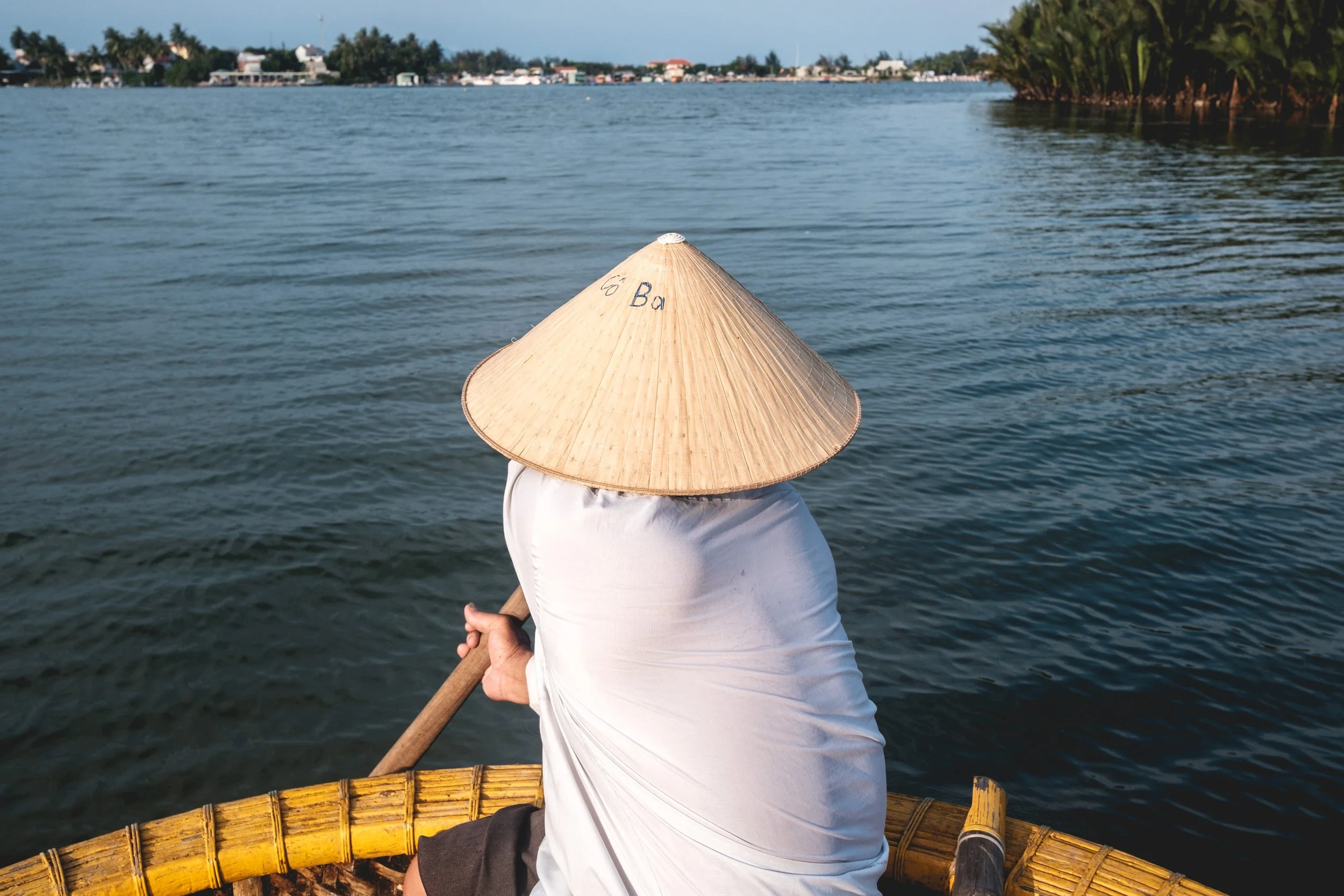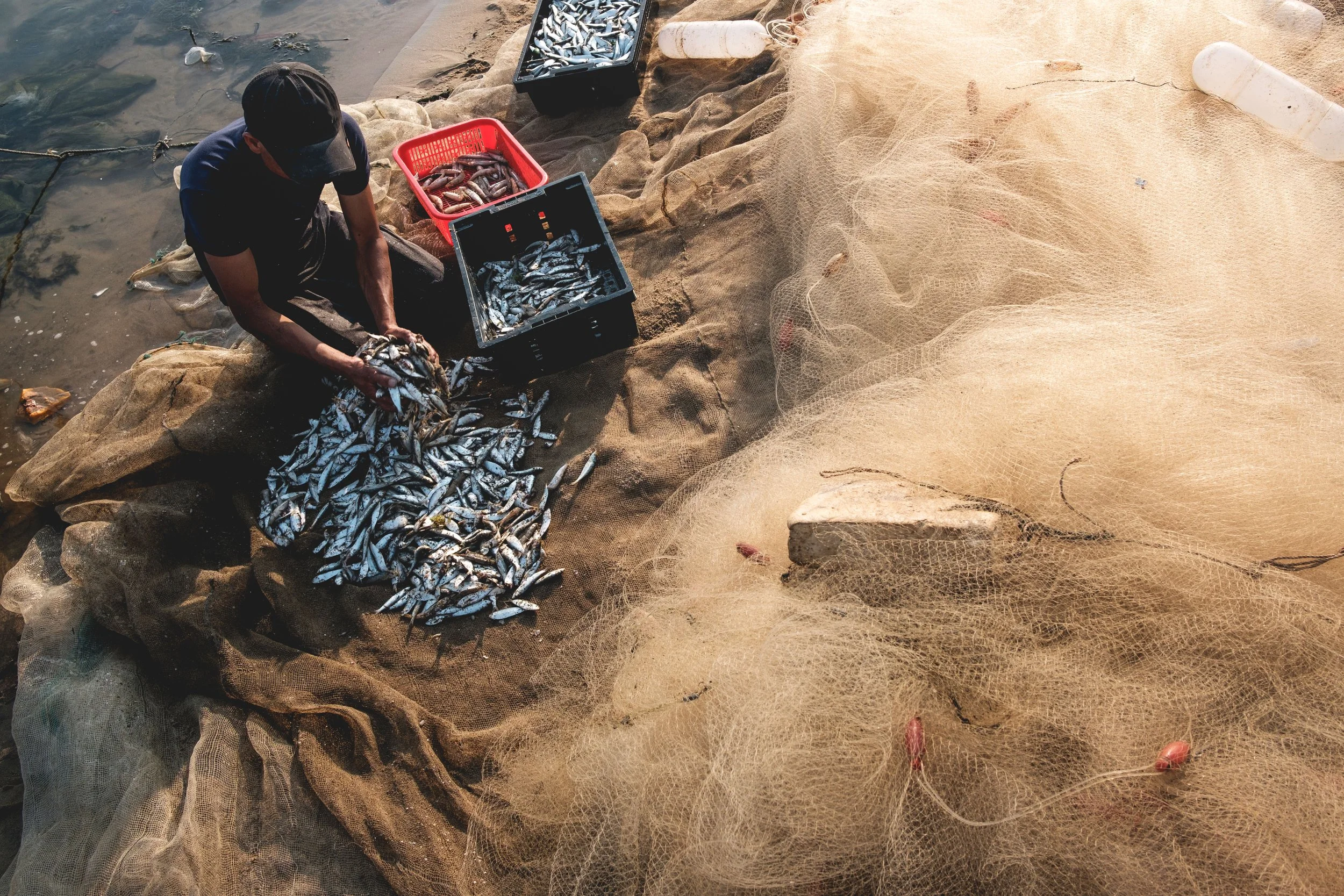The tale of basket boats in coastal Vietnam
Vietnam’s narrow tube houses come from the feudal era and the tax policy in effect at the time. The feudal state charged a fee based on the width of the street-facing facade to collect taxes, pushing owners to make their house as narrow as possible.
Following the trend initiated by these thin buildings, thúng chai, or basket boats, also have their origins in the hefty taxes on boats implemented by the French during the colonial era. These iconic boats, now a recurrent feature of Vietnam's coastal landscapes, are said to be born out of ingenuity from locals to avoid paying the unpopular taxes.
A bright new day full of promises
A woman organizing workers on the beach
Unloading from a large boat to a basket boat
Basket boats making round trips between larger ships and the shore
The fishermen who built them argued that these were not boats at all, but baskets, and therefore couldn’t be taxed. Their crafty plan seems to have worked, and thúng chai have actually proven to be highly functional fishing vessels.
Working on nets
Heading out to sea
Traffic jam on the beach. Tough negotiations are about to start to get the best prices
Heavy loads
The process to make a basket boat is long and laborious and requires refined skills. Made from bamboo using traditional weaving techniques and then hammering strips of bamboo into place, the boat is then coated in waterproof resin made from coconut oil, tar or, increasingly, fiberglass. With regular re-coating, each boat can last decades.
Cô Ba on her boat
Sorting out the catch of the day
Performance for tourists
Dramatic sunrise
Mastering how to maneuver a basket boat properly also takes time, but it can be very rewarding process for fishermen. Instead of having to work on large fishing vessels that take them far away from their families, basket boat owners can operate independently and make a living on their own. The basket boats can also be used as lifeboats during emergencies at sea or to bring the catch of a night from a large boat to shore.
A sea full of fishes














